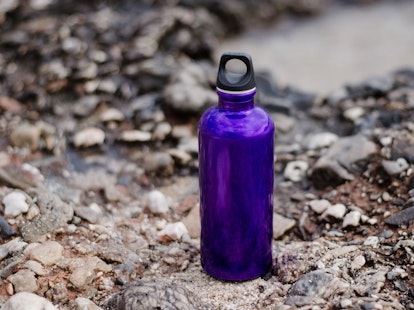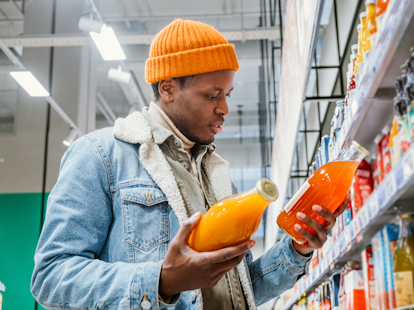On March 9, 2021, ECHA launched the first 2021 public consultation on eight potential SVHCs. The Candidate List will expand to 219 if these proposals are accepted.
On March 9, 2021, European Chemical Agency (ECHA) launched its first public consultation of 2021 on eight proposals of potential Substances of Very High Concern (SVHCs)[1]. The Candidate List will expand to 219 if these proposals are accepted. Interested parties have until April 23, 2021 to submit comments and further information on use, exposure, alternatives and risks of the substances to ECHA.
The eight potential SVHCs are:
- 1,4-dioxane
- Its Carcinogen 1B-classification is considered to be included in Annex VI of the CLP regulation in the draft of the upcoming 17th ATP
- 2,2-bis(bromomethyl)propane1,3-diol (BMP); 2,2-dimethylpropan-1-ol, tribromo derivative/3-bromo-2,2-bis(bromomethyl)-1-propanol (TBNPA); 2,3-dibromo-1-propanol (2,3-DBPA)
- 2-(4-tert-butylbenzyl)propionaldehyde and its individual stereoisomers
- 4,4'-(1-methylpropylidene)bisphenol; (bisphenol B)
- Glutaral
- Medium-chain chlorinated paraffins (MCCP) [UVCB substances consisting of more than or equal to 80% linear chloroalkanes with carbon chain lengths within the range from C14 to C17]
- Orthoboric acid, sodium salt
- Phenol, alkylation products (mainly in para position) with C12-rich branched or linear alkyl chains from oligomerization, covering any individual isomers and/ or combinations thereof (PDDP)
The potential uses of these potential SVHCs are summarized in Table 1.
Table 1. Possible uses of the potential SVHCs in the Consultation List published by ECHA on March 9, 2021
| NO | SUBSTANCE | CAS NO. / EC NO. | CLASSIFICATION | POTENTIAL USES |
|---|---|---|---|---|
| 1 | 1,4-dioxane | 204-661-8 / 123-91-1 | Ev. C (human health and environment) |
|
| 2 | 2,2-bis(bromomethyl)propane1,3-diol (BMP) 2,2-dimethylpropan-1-ol, tribromo derivative/3-bromo-2,2-bis(bromomethyl)-1-propanol (TBNPA) 2,3-dibromo-1-propanol (2,3-DBPA) | 221-967-7 / 3296-90-0 253-057-0 / 36483-57-5, 1522-92-5 202-480-9 / 96-13-9 | Carc. 1B |
|
| 3 | 2-(4-tert-butylbenzyl)propionaldehyde and its individual stereoisomers | - / - | Repr. 1B |
|
| 4 | 4,4'-(1-methylpropylidene)bisphenol; (bisphenol B) | 201-025-1 / 77-40-7 | ED |
|
| 5 | Glutaral | 203-856-5 / 111-30-8 | Respiratory sensitising properties |
|
| 6 | Medium-chain chlorinated paraffins (MCCP) [UVCB substances consisting of more than or equal to 80% linear chloroalkanes with carbon chain lengths within the range from C14 to C17] | - / - | PBT vPvB |
|
| 7 | Orthoboric acid, sodium salt | 237-560-2 / 13840-56-7 | Repr. 1B |
|
| 8 | Phenol, alkylation products (mainly in para position) with C12-rich branched or linear alkyl chains from oligomerization, covering any individual isomers and/ or combinations thereof (PDDP) | - / - | Repr. 1B ED |
|
Abbreviations
Carc. 1B: Carcinogenicity category 1B
ED: Endocrine disrupting
Ev. C: Equivalent level of concern
PBT: Persistent, bioaccumulative and toxic
Repr. 1B: Toxic to reproduction category 1B
UVCBs: Substance of unknown or variable composition, complex reaction products or biological materials
vPvB: Very persistent and very bioaccumulative
SGS is committed to providing information about development in regulations for consumer products as complimentary services. Through a global network of laboratories, SGS provides a wide range of services including physical/mechanical testing, analytical testing and consultancy work for technical and non-technical parameters applicable to a comprehensive range of consumer products. In the end, it’s only trusted because it’s tested. Contact us for more information or visit our website.
For enquiries, please contact:
Emily Lam
Corporate Research & Development
t: +852 2204 8339
© SGS Group Management SA - 2021 - All rights reserved - SGS is a registered trademark of SGS Group Management SA. This is a publication of SGS, except for 3rd parties’ contents submitted or licensed for use by SGS. SGS neither endorses nor disapproves said 3rd parties contents. This publication is intended to provide technical information and shall not be considered an exhaustive treatment of any subject treated. It is strictly educational and does not replace any legal requirements or applicable regulations. It is not intended to constitute consulting or professional advice. The information contained herein is provided “as is” and SGS does not warrant that it will be error-free or will meet any particular criteria of performance or quality. Do not quote or refer any information herein without SGS’s prior written consent.



